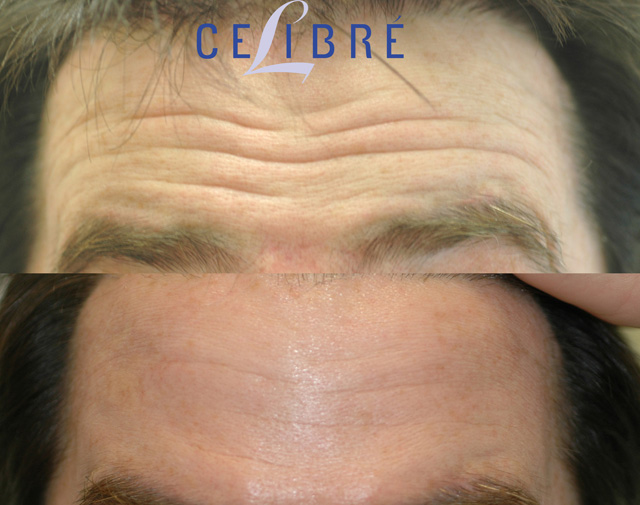Summary
Botox is measured in units, not by syringe volume. A standard vial contains 100 units that are diluted before use. The number of units drawn into a syringe depends on the dilution, not the syringe size. Understanding how units relate to dosage and cost helps patients make informed treatment decisions.
Patients often hear the term “units” when discussing Botox, but many are unsure how units relate to syringe size or treatment cost. Unlike other injectable treatments that may be sold by the syringe, Botox is always measured and priced by the unit. Knowing how Botox units work allows you to better understand your treatment plan and expected results.
This guide explains what Botox units are, how syringes are filled, how many units are commonly used in different facial areas, and how cost is calculated.
What Is a Botox Unit?
A Botox unit is a standardized measure that reflects the biological activity of the botulinum toxin. It does not refer to liquid volume. Each unit contains a precise amount of active ingredient used to relax targeted muscles and soften the appearance of lines caused by facial expression.

Botox is supplied to medical clinics as a dry powder. Before injection, the provider adds a specific amount of sterile saline. This process is called reconstitution. The amount of saline used determines how many units are present in each milliliter of solution and this amount varies from practitioner to practitioner based on personal preferences.
The unit count always remains the same, regardless of dilution. Dilution only affects how much liquid is injected, not the strength of each unit.
How Many Units Are in a Botox Vial?
Most commonly used Botox vials contain:
- 100 units per vial (standard size)
Some practices may also carry:
- 50-unit vials for smaller treatment needs
The vial size is not what determines cost for the patient. Botox is billed by the unit, based on the exact number required for the treatment area.
Botox Units Per mL: Understanding Dilution
While individual injection techniques may vary, one common dilution is:
100 units of Botox mixed with 2.5 mL of saline
This results in approximately:
- 1 mL of solution = about 40 units of Botox
Using this dilution, the approximate conversions are:
| Volume (mL) | Approximate Units |
| 0.1 mL | ~4 units |
| 0.25 mL | ~10 units |
| 0.5 mL | ~20 units |
| 1.0 mL | ~40 units |
This table is useful for understanding how many units are drawn into a syringe, but providers handle all measuring and dosing. Patients do not need to convert these values themselves.
How Many Botox Units Are in a Syringe?
A syringe is simply the tool used to hold and administer the reconstituted Botox. The number of units in a syringe depends entirely on how much Botox solution is drawn into it and what the dilution of the solution is.
Using the common dilution noted above:
- A full 1 mL syringe contains about 40 units
- 0.5 mL contains about 20 units
- 0.25 mL contains about 10 units
This is why the question “How much is a syringe of Botox?” does not provide a clear answer. The syringe is only a container. The dosage and effect depend on the number of units administered and that depends on the solution strength. .
Botox and Insulin Syringes
Some injectors use insulin syringes for precision micro-dosing. The markings on an insulin syringe indicate insulin volume measurements, not Botox units. The injector calculates the unit amount based on the known dilution. This is a technical step managed by the provider to ensure accurate dosing.
The key point for patients to understand is that:
- The syringe type does not determine the dosage.
- The provider controls the exact unit amount administered.
How Many Botox Units Are Needed for Each Treatment Area?
The number of units needed varies depending on muscle size, strength, expression patterns, age, and desired outcome. Below are commonly used dosage ranges in clinical practice:
| Treatment Area | Typical Unit Range |
| Forehead (horizontal lines) | 10 to 20 units |
| Between eyebrows (frown lines / glabella) | 15 to 30 units |
| Crow’s feet (outer corners of eyes) | 5 to 12 units per side |
| Full face (combined areas) | 40 to 100+ units |
First-Time Patients
Individuals receiving Botox for the first time often start at the lower end of these ranges. This allows the provider to evaluate how the patient responds and adjust future dosing for best results.
Maintenance Treatments
Once ideal results are achieved, maintenance treatments usually require fewer units over time.
How Much Does Botox Cost?
Most medical practices price Botox per unit, not by the syringe. This ensures that each patient receives an appropriate and customized dose.
Typical pricing per unit ranges from $10 to $20 depending on the clinic and geographic region.
Example Cost Calculation
If the forehead requires 12 units and each unit is priced at $12:
- 12 units x $12 = $144 total
This pricing model is more transparent than selling Botox by the syringe, because the syringe volume does not indicate the dosage or expected result.
What Influences the Number of Units Recommended?
Several factors determine the amount of Botox needed:
- Muscle thickness and strength
- How expressive a person’s facial movements are
- Skin elasticity and age-related changes
- Desired level of smoothness (subtle vs more pronounced)
- History of previous Botox treatments
During consultation, the provider evaluates these factors to determine an appropriate and effective dosage.
Key Points to Remember
- Botox is measured in units, not by syringe size or volume.
- A standard Botox vial contains 100 units.
- When commonly diluted, 1 mL equals about 40 units.
- Different facial areas require different unit amounts.
- Botox is priced per unit, allowing personalized treatment planning.
Understanding Botox units helps patients feel more informed and confident during their consultation and treatment planning.

